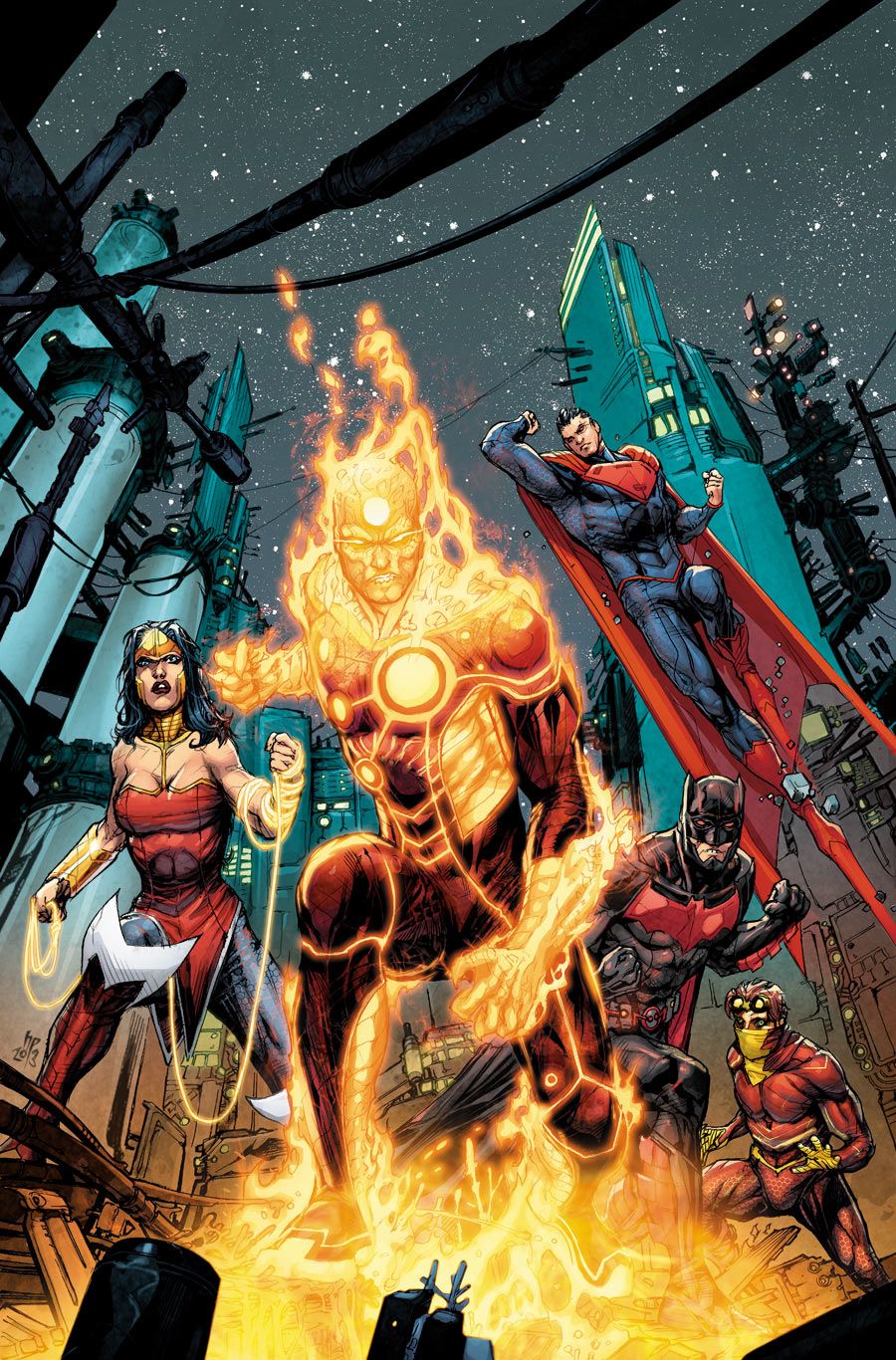For the first time in this series, plotter Keith Giffen is credited with "art breakdowns" in "Justice League 3000" #5, which heralds the arrival of Firestorm. As with all of the other characters in this series plotted by Giffen and scripted by J.M. DeMatteis, there's something not quite right about Firestorm, which adds to the adventure of discovering the thirty-first century alongside the crew calling itself the Justice League.
Although not present on the comic book's interiors, Howard Porter does provide cover art for this issue. The logo announcing Firestorm's presence holds no connection to previous logos associated with the Nuclear Man, but the visual of the character is familiar enough for readers to make the gestalt connection.
Raymund Bermudez provides interior art for Giffen's breakdowns, with inks from Wayne Faucher and colors from regular series' colorist, Hi-Fi. Bermudez's art is not too far off model from Porter's work, but nowhere near as meticulously detailed. I suspect Faucher helps smooth the transition between the two a bit, as does the bedrock coloring of Hi-Fi. At several points throughout the story, Giffen's breakdowns shine through Bermudez's pencils, most notably in Superman's hairstyle (which radically changes in this issue from the previous) and in characters' profiles. Readers unfamiliar with Giffen's artwork might miss these peeks, but for more seasoned readers who have enjoyed Giffen's time in the comic industry a little more thoroughly, it really is quite comforting. That's not to say Bermudez's work isn't comforting. He's a decent fill-in for Porter and one I hope to see again and be able to watch continue to evolve. These characters and this setting work nicely with his style and vice versa.
The story itself continues to detail the struggles of the Justice League against one another as well as against the threat of the Five. Firestorm represents deeper apathy to the cause and more rigid defiance to being programmed or ordered into action. That blends well with the attack of Kali, one of the Five, capable of putting Superman and Wonder Woman on their heels at the same time. Giffen and DeMatteis are world-building here, mixing and matching, playing around and experimenting. They're not afraid of trying something for the sake of trying it, just to see what happens, and that makes "Justice League 3000" #5 just a little more compelling to read. As the fight rages on, the team begins to gel a bit more, but this is not your father's (or even your) Justice League. The characters bear the names, but they haven't earned the legacy.
"Justice League 3000" #5 is one of those comics that packs a whole lot of action and conversation into twenty pages. Readers learn almost everything they need to know about Firestorm, both through the discussion between Teri and Terry (the Wonder Twins) as well as through Firestorm's actions and declarations. Giffen and DeMatteis' story is really coming together and I find myself just a bit more invested in each issue, especially with Firestorm now in the mix, such as he is.

